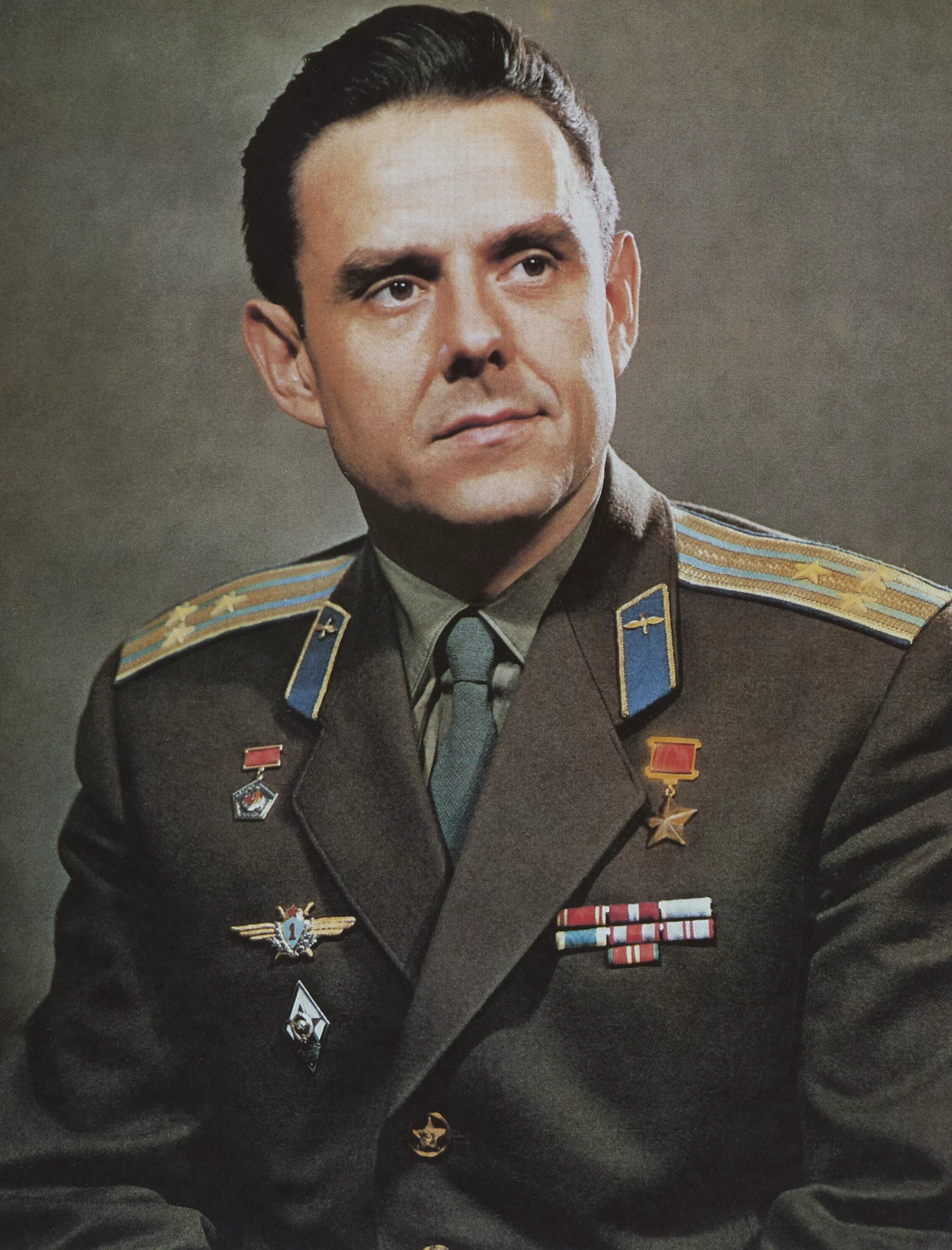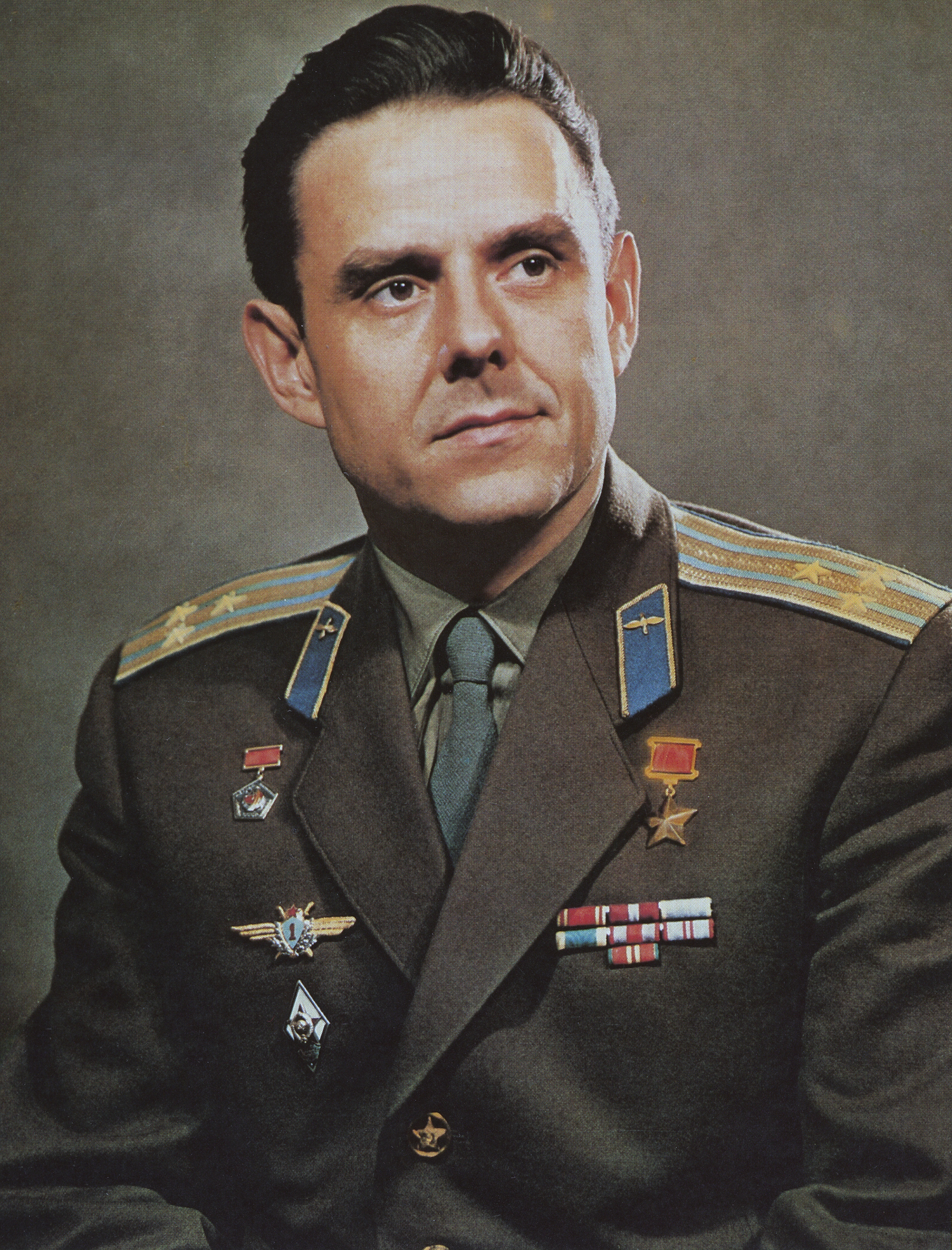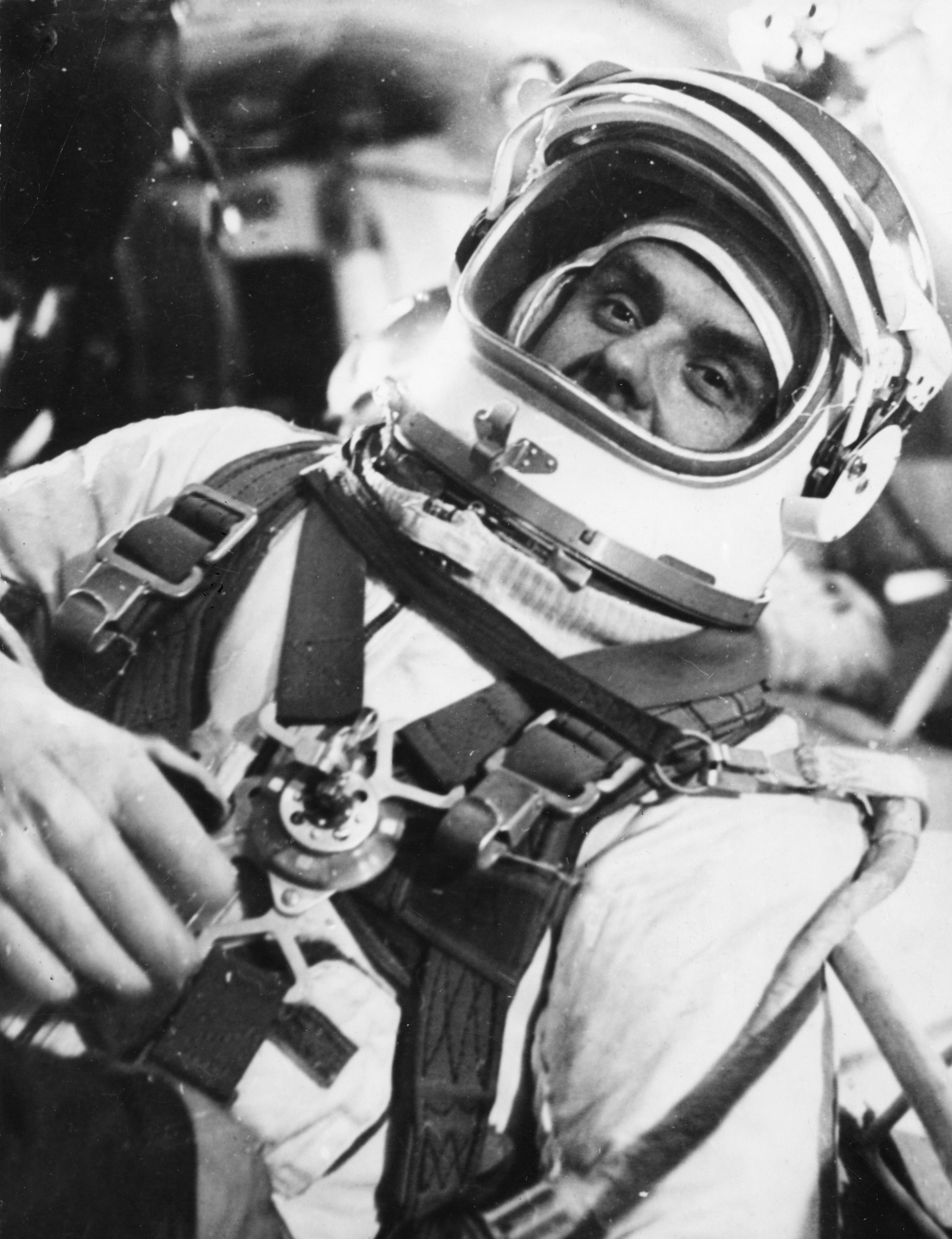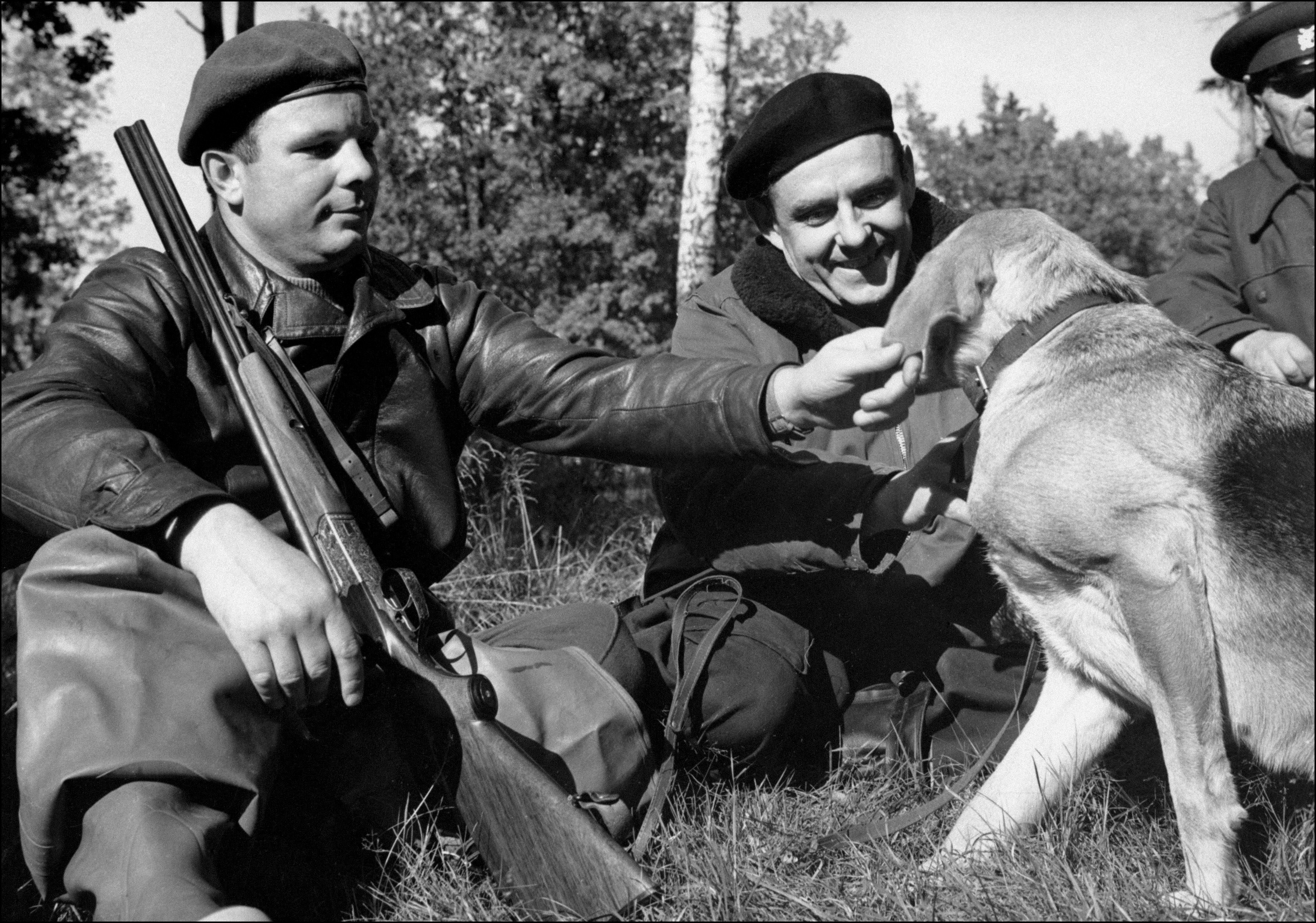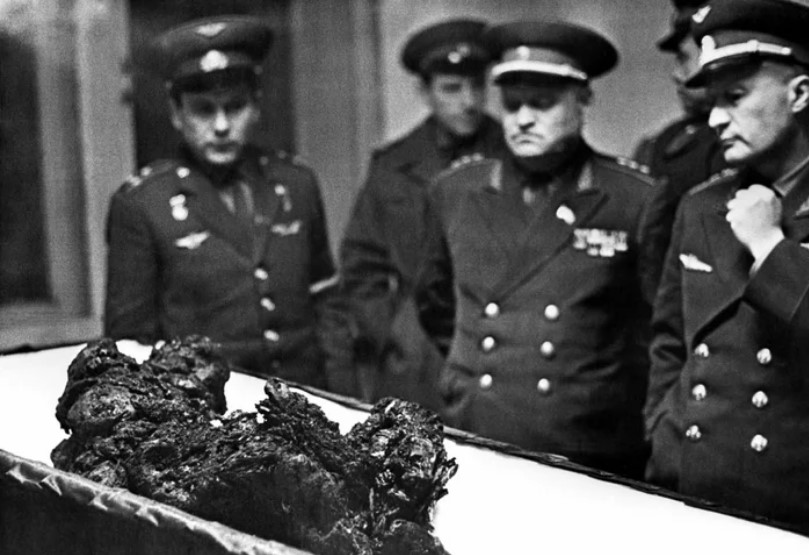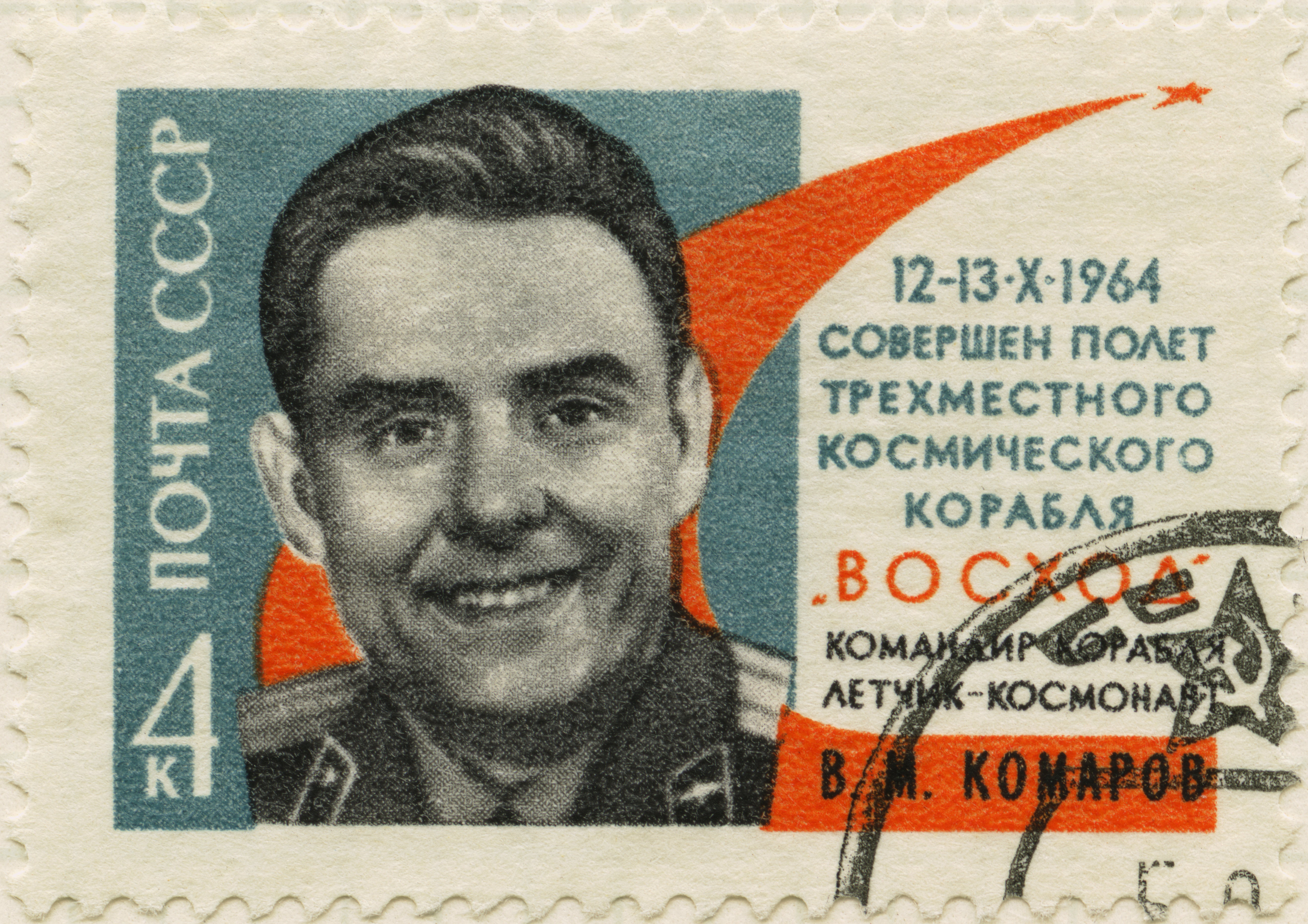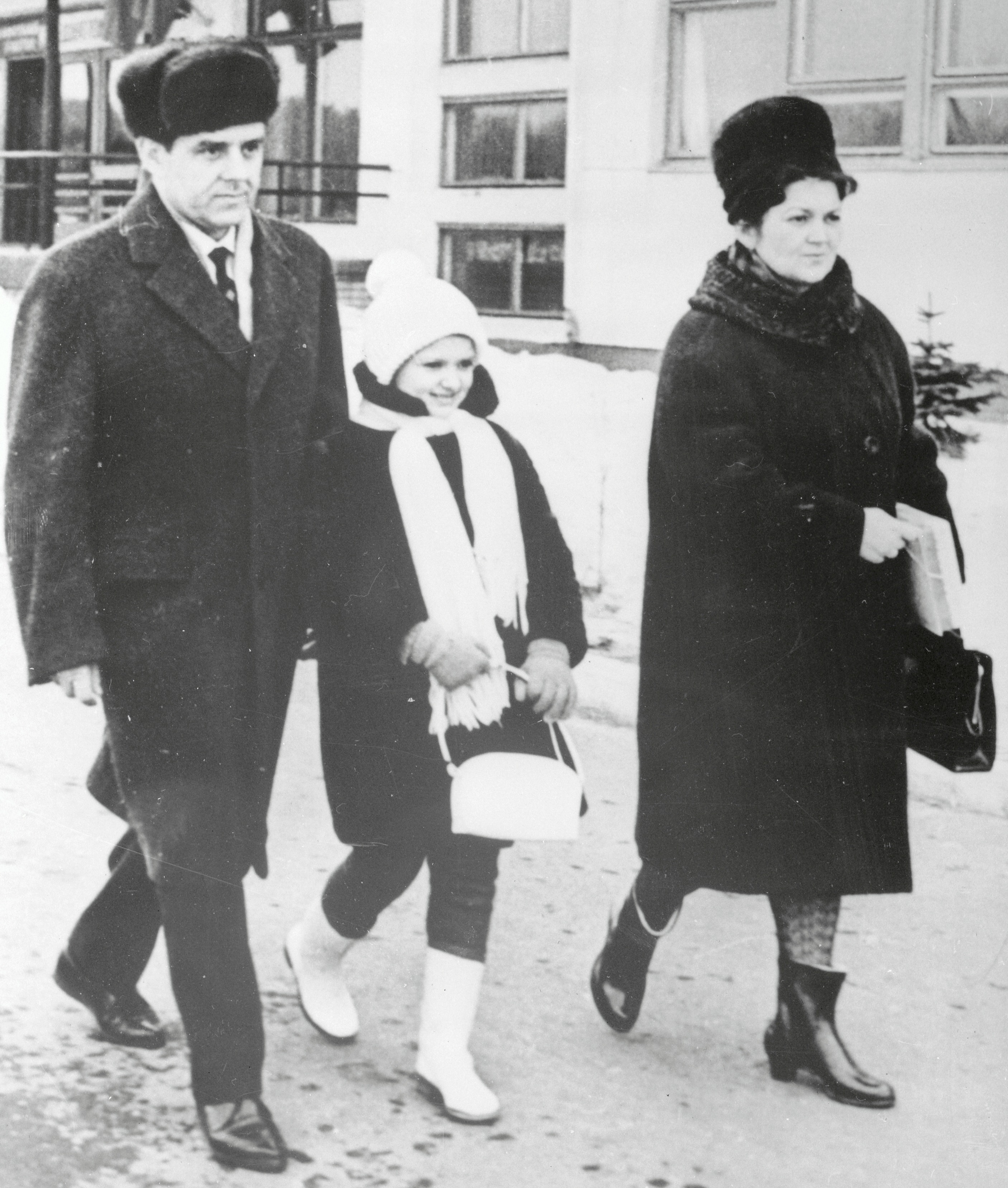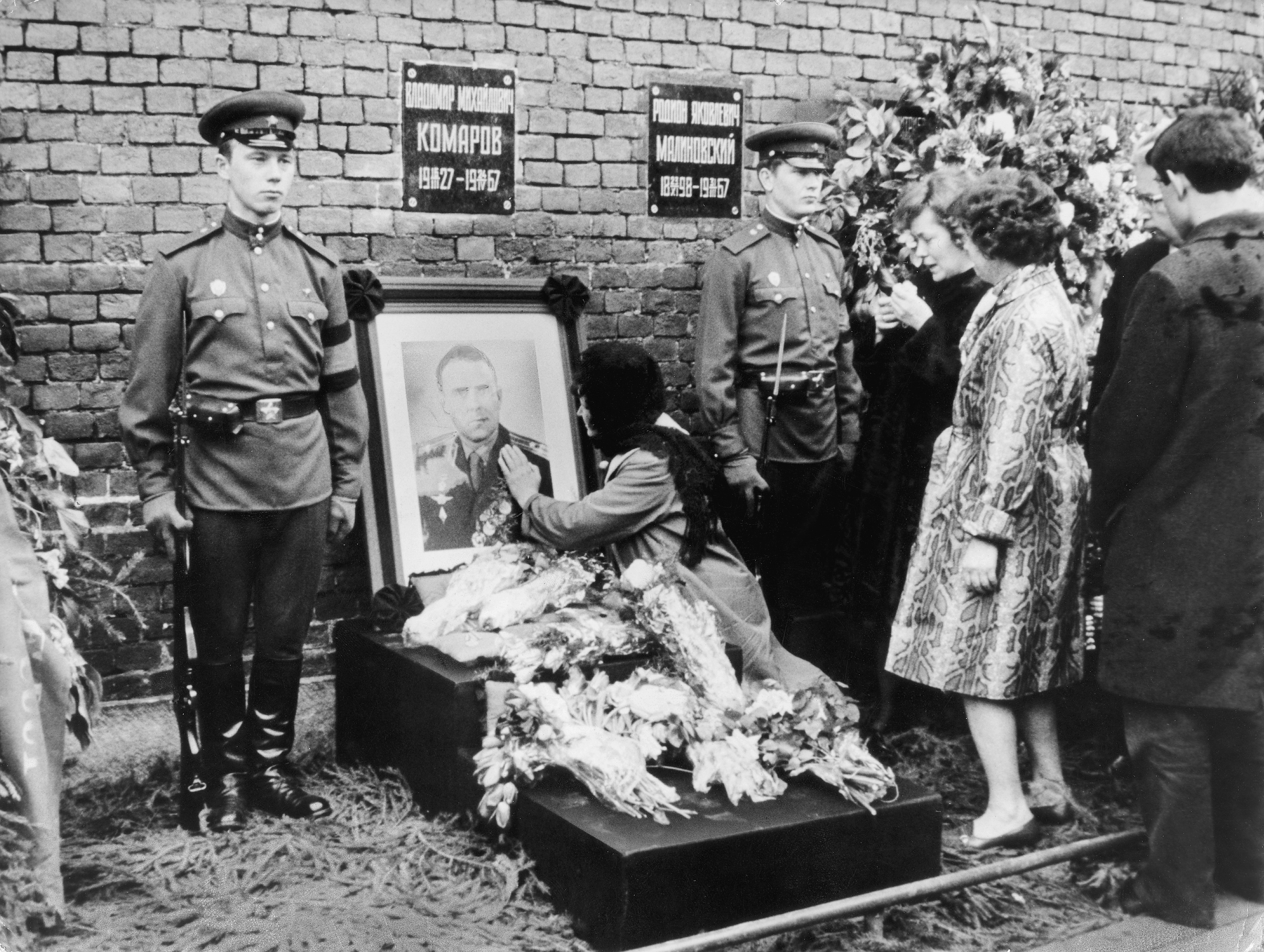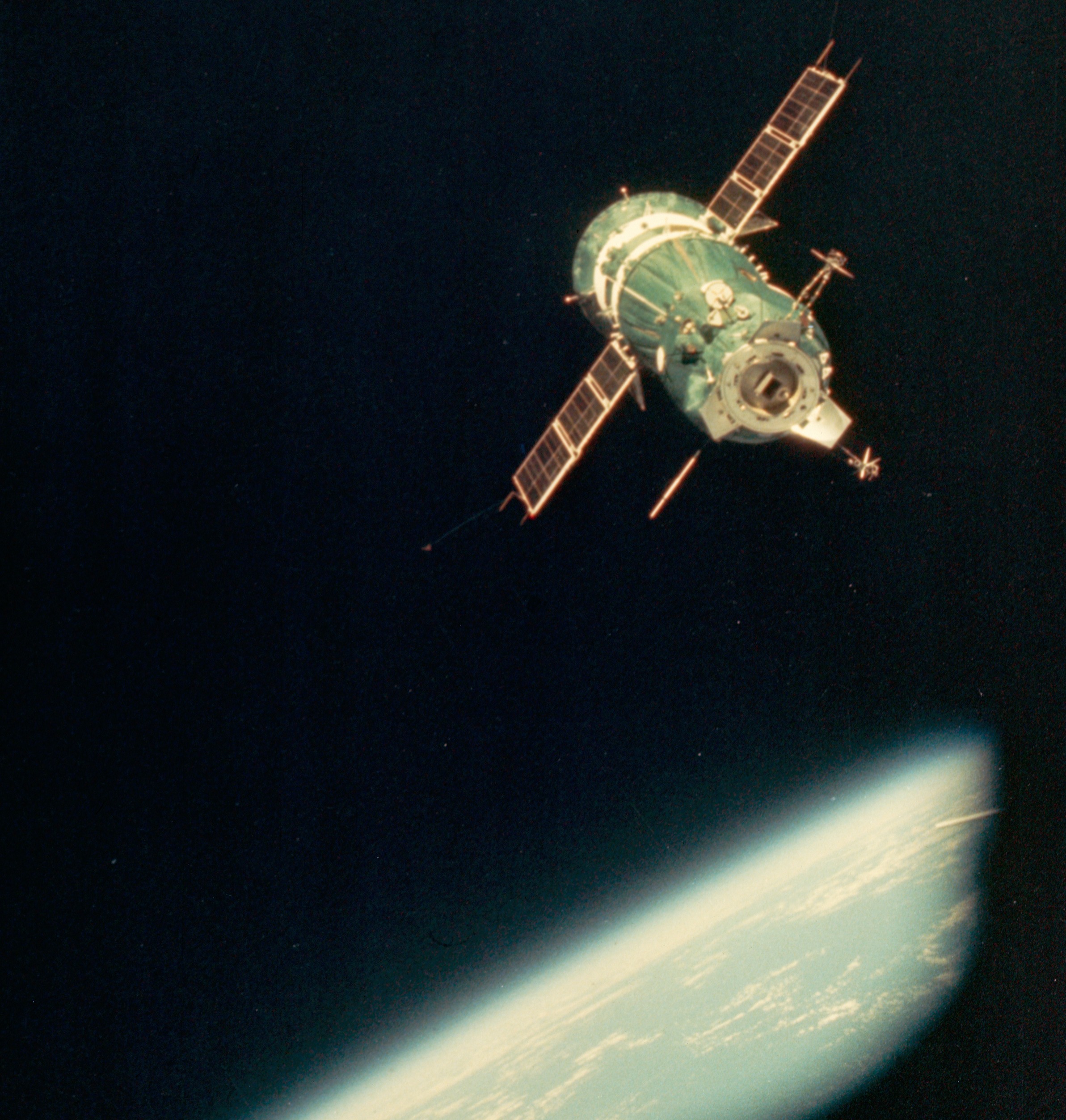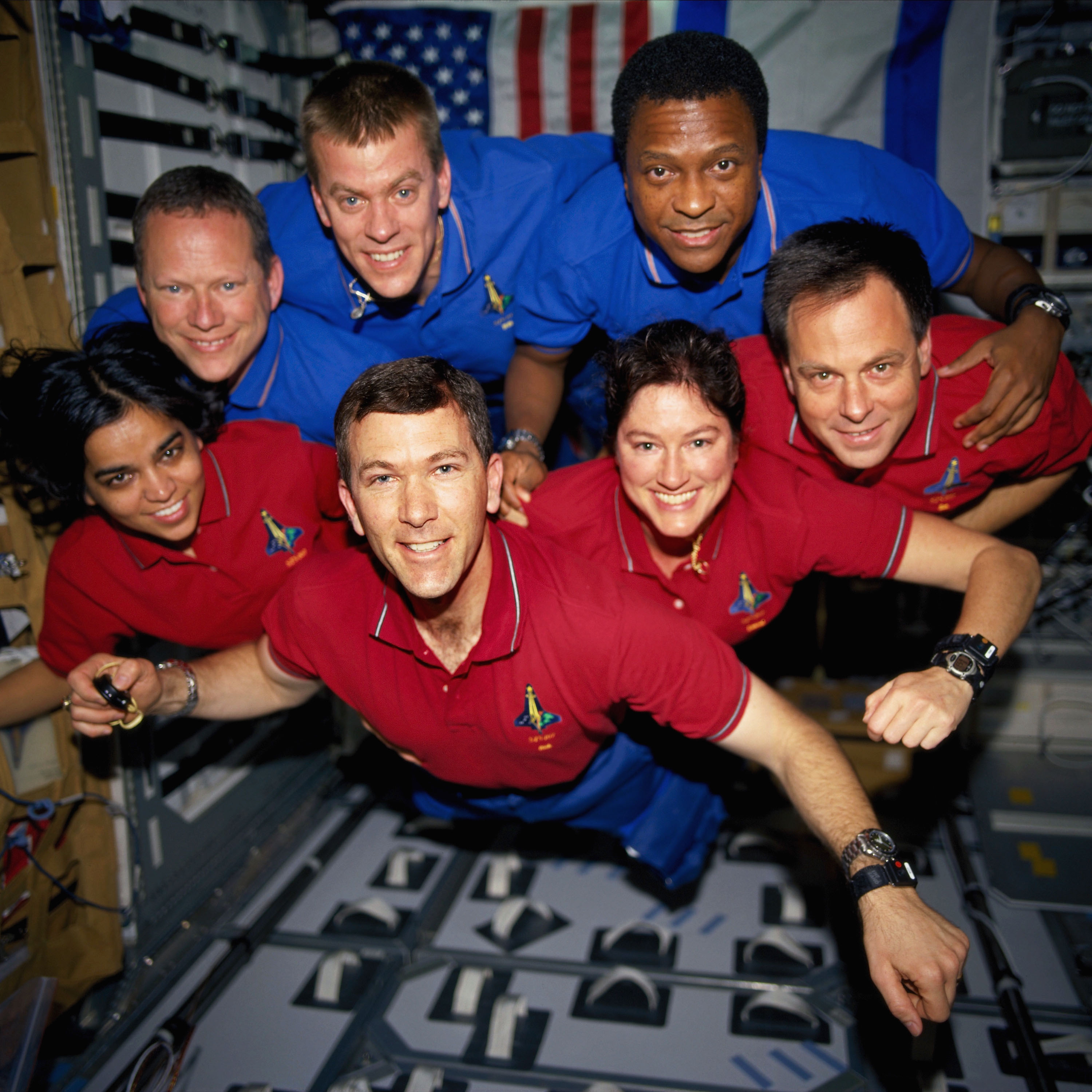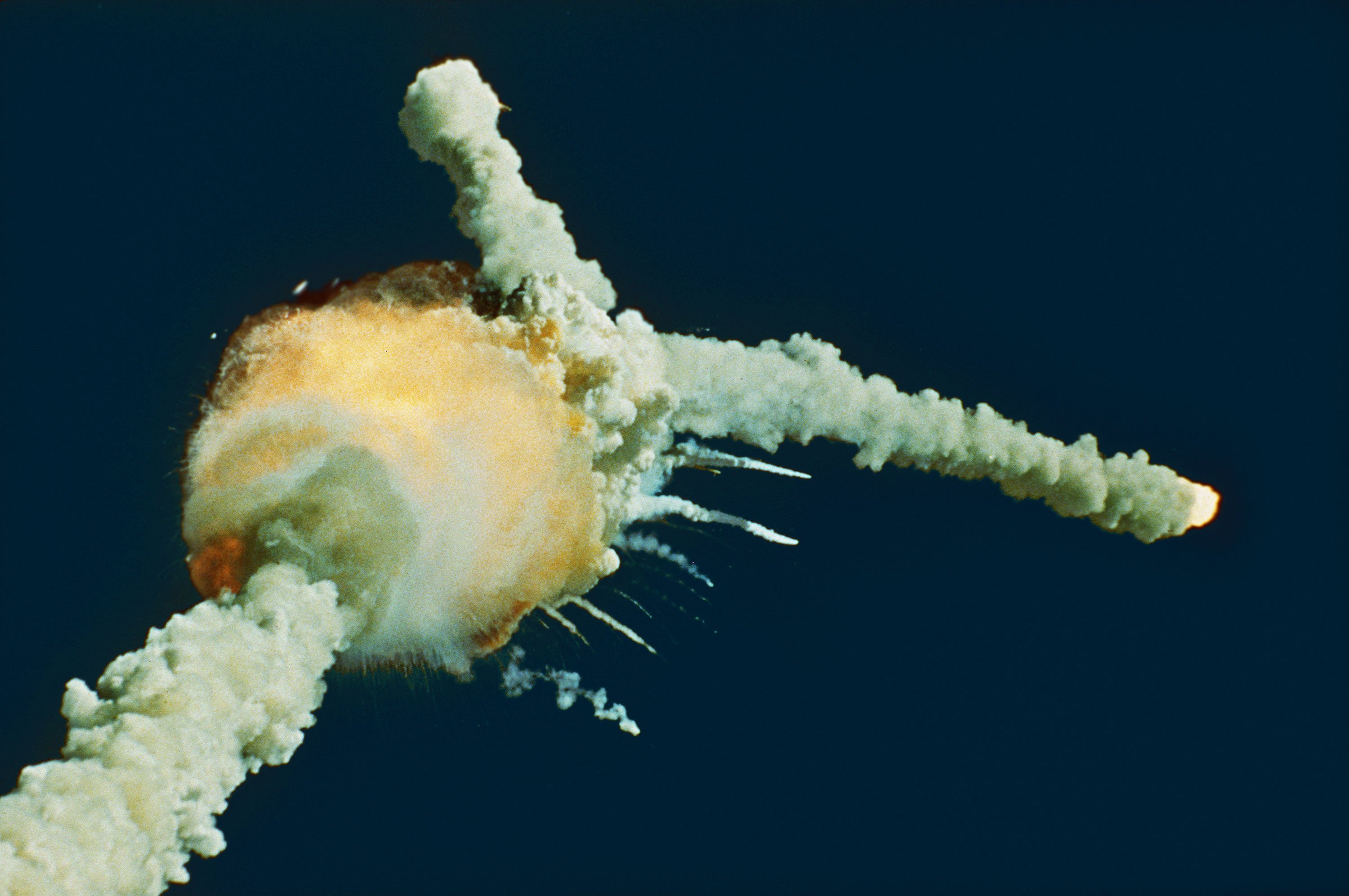Vladimir Komarov was the first man to ever die in space in 1967 when he plummeted to Earth at unbelievable speeds – a choice thought to have been made to save his best friend’s life.
Komarov was one of Russia‘s leading lights in the space race against the US, with the spaceman being the first man ever to fly into space twice.
Alongside pal Yuri Gagarin – the first ever man to go into space – the pair were seen as two of the Soviet Union’s greatest explorers.
But, as the Soviets battled against the US to conquer the outside world, they faced a highly controversial disaster when one of their spaceships malfunctioned in orbit.
In 1967, Komarov and Gagarin were assigned to the same Earth-orbiting mission – and it’s said that they both knew the space capsule was not safe to fly.
Many have speculated that the pressure of winning the space race led to countless problems before Komarov’s take-off due to unsafe and rushed plans in his Soyuz 1 spacecraft.
Before any human sat in the cockpit of the Soyuz 1, three unmanned test missions were completed.
It looked like he was going to make it back to the ground after this really pretty disastrous mission and the the parachutes failed and he crashed back down to Earth
Richard Holligham
The trio all failed miserably – with one exploding before launch, another malfunctioning and a third sinking to the bottom of the sea.
Days before the final launch, 203 design faults were also said to have been found by engineers in the pre-flight checks.
Despite the evident errors, the planned mission on April 23, 1967 went ahead.
Komarov is said to have told friends he knew he would probably die, but he didn’t back out because he didn’t want his pal Gagarin – his back-up pilot – to die.
The ambitious mission was supposed to involve a second spacecraft with three more men on board.
Komarov would sensationally go into space alone in one aircraft – the failing Soyuz 1 – before the Soyuz 2A took off a day later.
The second craft, carrying a trio of Soviet spacemen, would find Komarov. The men planned to move from one capsule to the other and all return together.
The ploy was being done to outdo NASA in a never-before-seen event.
Richard Holligham, a journalist and space expert, told the BBC: “Komarov knew when he left the ground that the spacecraft had quality control issues but straight away once he got into orbit things were failing.
“Significantly one of the solar panels which provided power to the spacecraft did not deploy which gave him very limited instrumentation.”
Navigational systems on board had also failed.
Due to the concerns on board the rocket and back at the Soviet base camp, the planned Soyuz 2 launch was scrapped just hours before.
This undoubtedly saved the lives of the three men.
Meanwhile, after 27 hours orbiting the Earth, Komarov was ordered to try and attempt an re-entry into the Earth’s atmosphere by himself.
The descent started off smoothly – with the cosmonaut even telling his team on the ground he was “feeling great, everything is fine”.
But once he reached an altitude of 23,000ft where he was supposed to pull his parachute, it failed to deploy.
The lines had become tangled during the re-entry process, says the controversial 2011 book titled “Starman, The Truth Behind the Legend of Yuri Gagarin”.
Richard continued saying: “It looked like he was going to make it back to the ground after this really pretty disastrous mission and the the parachutes failed and he crashed back down to Earth.
“He probably died on the way back just from the G-forces and when he hit the ground the space raft then caught fire because of a fault with the retro rockets.”
He came hurtling down to Earth at a harrowing 134mph, say reports, before the remaining rocket exploded on impact.
ASTRO DEATHS
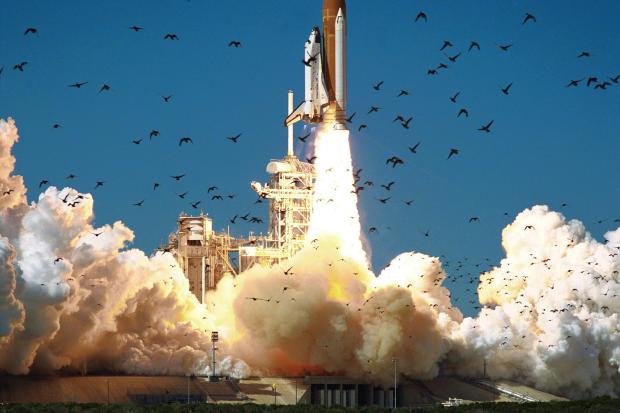
TWENTY ONE people have been known to have died on space expeditions, including Komarov, since the first mission in 1961.
US APOLLO 1 1967
The Soyuz 1 tragedy came just months after the US Apollo 1 mission saw three astronauts killed before they even took off.
Their rocket burst into flames on the launchpad in Cape Caneveral in January 1967 it what was supposed to be the first manned mission to the Moon.
A fire broke out while the astronauts were sitting on the launchpad, waiting for a microphone glitch to be fixed.
Nasa flight director Chris Kraft told Ars Technica: “I heard their screaming voices in the cockpit of the spacecraft.
“I heard them scream get me out of here. And then there was dead silence on the pad.
“Within minutes we knew they were dead, and we were in deep, serious trouble.”
CHALLENGER SPACE SHUTTLE 1986
On January 28, seven astronauts tragically died when their Challenger rocket exploded in the sky just 73 seconds into the flight.
On board was Francis “Dick” Scobee, pilot Michael Smith, mission specialists Ronald McNair; Ellison Onizuka, and Judith Resnik; payload specialist Gregory Jarvis; and teacher Christa McAuliffe.
Just before the blast, pilot Smith could be heard saying “uh-oh” on the intercom in the shuttle’s cabin.
The disaster became “one of the most significant events of the 1980s, as billions around the world saw the accident on television and empathized with any one of the several crewmembers killed,” according to Nasa.
COLUMBIA SPACE SHUTTLE 2003
Seven astronauts on the Columbia aircraft tragically died 16 days into their mission when their rocket broke down shortly after re-entry into the Earth’s atmosphere.
Commander Rick Husband, pilot Willie McCool, mission specialists Kalpana Chawla, Laurel Clark, Michael Anderson, David Brown and payload specialist Ilan Ramon all lost their lives.
The Columbia suffered a catastrophic failure due to a breach that occurred during launch that saw foam fall from the External Tank and hit the Reinforced Carbon Carbon panels on the shuttle’s left wing.
Hot gases were able to melt major structural elements of the wing causing it to collapse and the aircraft to perish.
SOYUV 11 DISASTER 1971
On June 29, Georgi Dobrovolski, Vladislav Volkov, and Viktor Patsayev were all found dead inside their Soyuv space rocket once they had successfully landed back on Earth.
The three Soviet men reportedly died of suffocation on their return to the ground despite no one noticing when they fell unconscious.
The fatal accident was caused by a faulty valve seal on the spacecraft that burst open during its separation from the service module.
A deadly combination of a leaking valve and the dropping pressure in the cabin caused the men to die.
It has been claimed for decades that Komarov was in constant communication with ground control as he came down to Earth.
But what he actually said has been debated.
Some believe he was trying to help the Soviets with warning messages.
Others say he was cursing the people who sent him on the doomed mission.
Pictures from the late 1960s show a number of Soviet soldiers standing around a bed of cremated limbs that was said to be Komarov’s body.
He was given a huge state funeral in Moscow for his pivotal role in the space race with his remains being interred in the Kremlin Wall.
PROTECTING A PAL
Komarov’s brave journey into space was always under intense scrutiny as it was heavily linked with iconic Soviet cosmonaut Yuri Gagarin.
Gagarin was the first man to ever enter space back in 1961 when he took the Vostok 1 further than any man had ever gone before.
This made him a national hero and a worldwide name for his efforts.
When the next leap in space history came about, Gagarin was again believed to be the man for the job.
But Komarov agreed to take the mission instead.
If I don’t make this flight, they’ll send the backup pilot instead. That’s Yura. We’ve got to take care of him
Vladimir Komarov
Once approved, Gagarin became the back-up pilot – with his close buddy strapped into the catastrophic rocket.
Several cosmonauts have since come out and admitted Komarov only agreed to fly the faulty Soyuz in order to protect Gagarin.
The book “Starman” claims Komarov told his other friends he had no choice but to go into space as if he didn’t Gagarin would.
He is allegedly quoted as saying: “If I don’t make this flight, they’ll send the backup pilot instead. That’s Yura.
“He’ll die instead of me. We’ve got to take care of him.”
The pair would regularly go to each other’s homes with their young families and would even go hunting together.
Gagarin was later banned from ever going to space again after the fatal ordeal.
He died the following year in a horror plane crash.
The Soviet Union didn’t send another person into space for 18 months.
A memorial for Komarov and the other 13 astronauts who died in space up to 1971 was placed on the moon by the crew of Apollo 15.
The chilling Lost Cosmonauts conspiracy theory
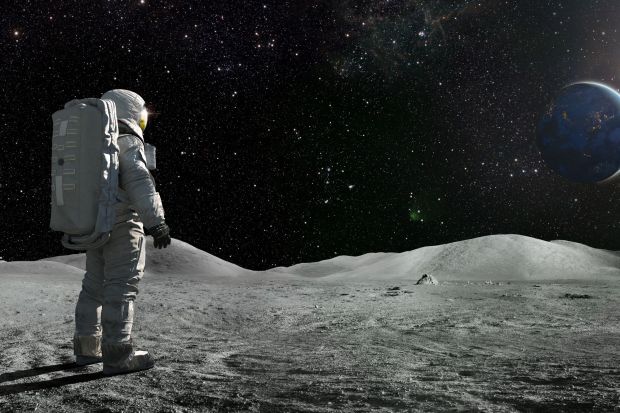
IN the past, shocking allegations have emerged that Soviet hero Yuri Gagarin wasn’t actually the first human to be blasted into space.
In fact, conspiracy theorists claim that several people left the Earth’s atmosphere before 1961 but Gagarin was the only one to survive the trip.
The Kremlin’s efforts to defeat the US in the space race was always shrouded in secrecy.
With many things being classified a state secret from the names of chief designers to vital audio recordings from inside space crafts.
And it is a set of alleged recordings made by radio operators in the 60s that sparked the haunting Lost Cosmonauts theory.
Voices recordings – which now sit scattered around online – appear to show Soviet cosmonauts cursing the people who sent them to space before their ultimate deaths.
Lost files from Komarov’s deathly descent have also been rumoured to have featured the brave man’s cries over his personal injustice.
Other recordings feature doomed space-goers describing an extreme “heat” as their spaceships plunged towards Earth.
The screams of death are also supposedly very apparent.
The term “The Lost Cosmonaut conspiracy” comes from a paper written by Thomas Ellis, from the Smithsonian in Washington DC.
Despite his theory catching wind globally Ellis later said: “It is known that the Soviets did cover up disasters and accidents within the space program, but there is no evidence to suggest they ever covered up any deaths in orbit.
“Amidst the torrent of startling revelations about the chaos and infighting of the Soviet space program that lurked behind its pristine public façade, there was no evidence to corroborate the Lost Cosmonauts theory.”
